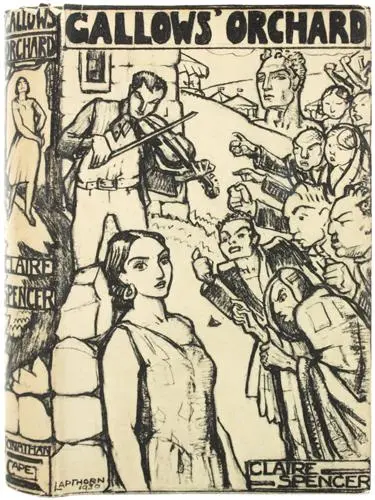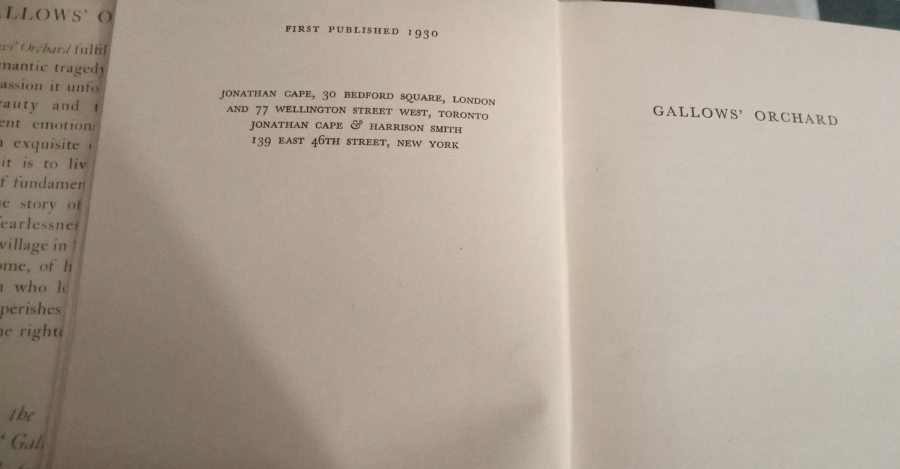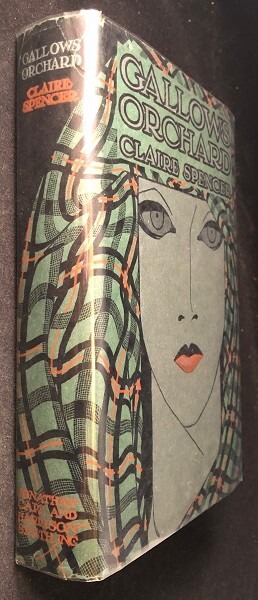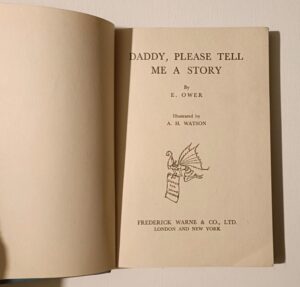Post Victorian Era : Claire Spencer’s Gallows Orchard
First published in 1930 by Jonathan Cape & Harrison Smith, is a remarkable debut novel by Claire Spencer that stands out as a haunting and atmospheric tale set in rural Scotland.

The novel tells the story of a Scottish girl who, after becoming pregnant by one man, marries another to save her reputation. When the truth is revealed, her village’s response echoes the dark, brooding sensibilities one might expect from the works of Thomas Hardy or Shirley Jackson. It’s a portrait of human frailty, small-town dynamics, and the unforgiving nature of social judgment.
Claire Spencer (1895–1987) was a Scottish-born novelist from Paisley, Scotland, who emigrated to the United States in 1918. She made her literary reputation with her debut novel with this exact book in 1930, which tells the story of a Scottish girl whose pregnancy and marriage disrupt her rural village, evoking comparisons to authors like Thomas Hardy and Shirley Jackson. Spencer’s writing is noted for its emotional immediacy, vivid natural descriptions, and complex human relationships. After her first marriage, she later remarried John Evans, son of Mabel Dodge Luhan, and lived in Taos and Maine. She passed away in 1987 at the age of 91. While she had a modest literary output and some recognition in her time, she remains a somewhat obscure figure today, with her novels occasionally resurfacing through reprints or collector interest.
Claire Spencer’s writing in “Gallows’ Orchard” is praised indeed for its immediacy and emotional intensity, marked by a passionate responsiveness to nature and the complex workings of the human heart. The narrative flows with an organic urgency that captures life’s inevitable moments and the inescapable consequences of the protagonist’s choices. This novel laid the foundation for Spencer’s reputation and was met with high acclaim at the time, with reviewers noting its natural-born storytelling quality and the electric feel of its narrative. Gallows Orchard is a captivating blend of romance, tragedy, and social critique, rendered with a distinctive voice and stylistic flair. The 1930 Jonathan Cape first edition remains a treasured artifact for literary enthusiasts and collectors alike, embodying both the aesthetic and narrative power of early modernist fiction.

The 1930 first edition by Jonathan Cape & Harrison Smith is especially collectible for its historical context, published during a brief and interesting period for the publisher. This edition is known for its quarter black cloth-backed hardcover design and is actively sought after by collectors interested in early 20th-century literature and finely produced books.
This first american edition, bound in green cloth with gilt lettering, captures a time when publishing was as much about presenting literature as a crafted artifact as it was about the written word itself.

The main difference between the New York Jonathan Cape & Harrison Smith 1930 edition and the Jonathan Cape 1930 U.K. edition of “Gallows’ Orchard” lies in the publishing arrangement and geographic origin. Jonathan Cape & Harrison Smith was a joint venture between the British publisher Jonathan Cape and the American publisher Harrison Smith, active from 1928 to around 1931. The New York edition was produced under this partnership in the United States, often featuring a red and black cloth binding and certain American printing details.
On the other hand, the Jonathan Cape 1930 edition was published solely by Jonathan Cape in London, typically bound in green cloth with gilt lettering and a dust jacket reflecting UK design styles.
Because the joint venture was brief and not highly successful, the New York Jonathan Cape & Harrison Smith edition is somewhat scarcer and considered a collectible item.
Hence the UK Jonathan Cape edition is as British first edition very rare and highly valuable on the hands of any collector.













